It was my first trip to Greece. I had only a couple of days in Athens before flying to Mykonos. Having experienced a fantastic free walking tour of lower Manhattan in New York City (thanks to the Laguardia Shuttle), to get the most bang for my buck on a short stay, I decided on an Athens walking tour.
I found an inexpensive half-day tour online and signed up for the next day. The meeting point was a metro station in central Athens not far from my room at the Periscope Hotel, a Starwood Design Hotel.
Syntagma Metro Station
The winding streets presented problems following the map the hotel clerk provided. I arrived at the station a few minutes after the tour was scheduled to begin. Fortunately, I caught up with the group just as the tour was starting.
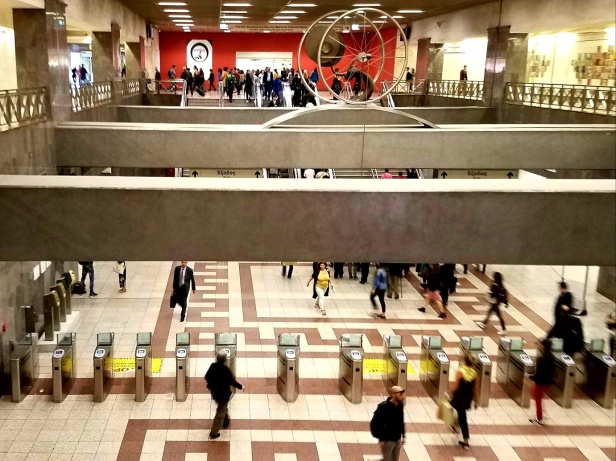
The metro station displays a collection of artifacts uncovered during construction.

The guide told the group how these items were uncovered and preserved.


Parliament Building and Changing of the Guard
It was a short walk to Syntagma Square where we learned about the old Royal Palace that now houses the Greek Parliament. The Greek Tomb of the Unknown Soldier is just below and in front of the Parliament Building. We arrived in time to get a good view of the changing of the guard.
The Greek Tomb of the Unknown Soldier is just below and in front of the Parliament Building. We arrived in time to get a good view of the changing of the guard.

The National Garden and Zappeion
The tour proceeded on a pleasant walk through the National Garden and past the Zappeion. In 1920, King Alexander was bitten by a pet monkey in this garden. He died of sepsis when the wound became infected. Alexander’s death was a turning point in Greek history. Look it up to get the full story.

The Zappeion was built in the National Garden with the goal of reviving the Olympic Games. In 1896, it served as the Olympic Village and fencing hall for the first Modern Olympic Games.
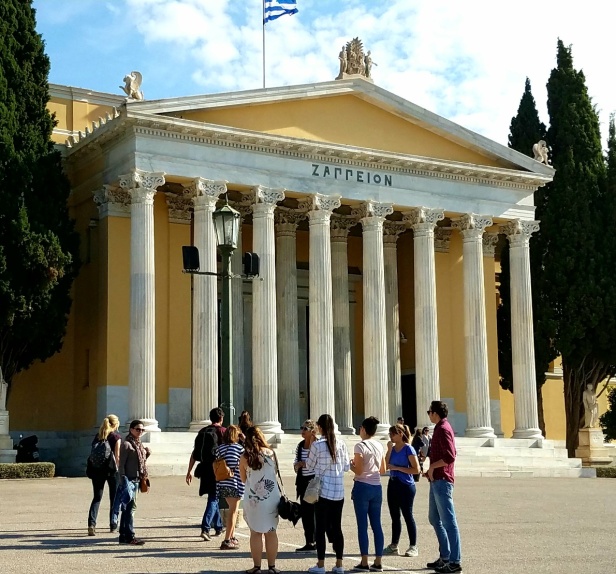
Temple of Zeus and Hadrian’s Gate
The stroll through the National Garden brought the tour to a large open area containing the Temple of Zeus.

Construction of this temple started in 520 BC. For a variety of reasons it was only during the reign of the Roman Emperor Hadrian 638 years later that the temple was completed. The temple was supported by 104 17-meter tall Corinthian columns.
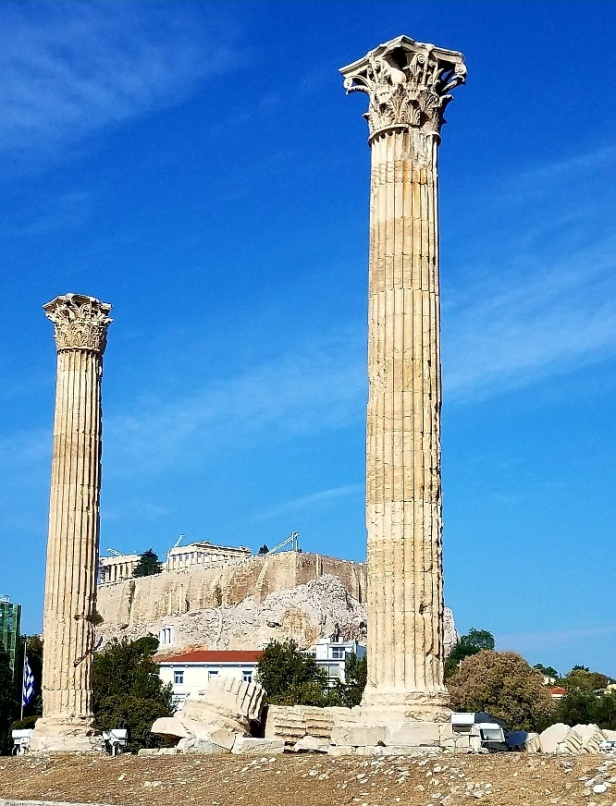
Exiting the area containing the Temple of Zeus, the tour stopped at Hadrian’s Gate (Arch).
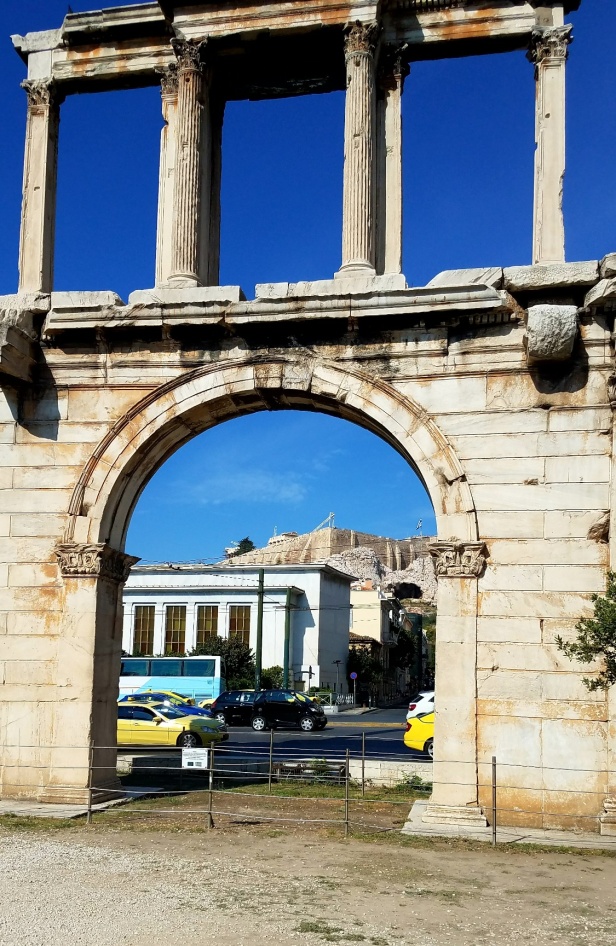
The Acropolis
From Hadrian’s Gate it was a short walk to the Acropolis and the various historic architectural structures it holds.
Theater of Dionysus
Climbing the hill of the Acropolis, the first major structure is the Theater of Dionysus, the world’s first theater.

Named for the god of wine, the theater has excellent acoustics.
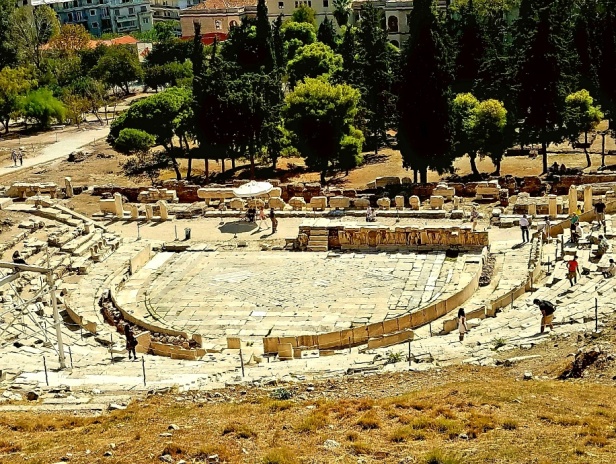
The Acropolis has great views of Athens, but it is not the highest point in the city.

The Erechtheion
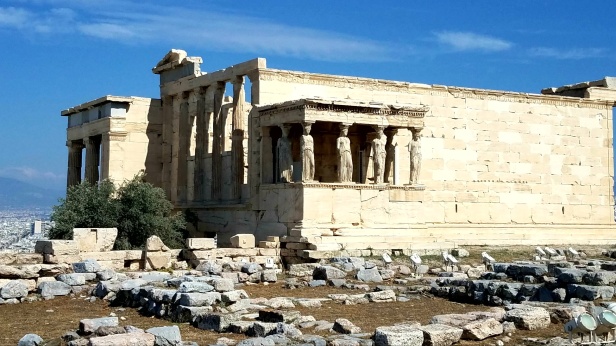
The Parthenon
The most famous building on the Acropolis is the Parthenon, an icon of Western civilization and Athenian democracy.

The Parthenon was a temple but served primarily as an Athenian state treasury. Over the years it also served as a church and a mosque. The Parthenon was severely damaged in 1687.
Ottoman Turks used the Parthenon to store ammunition (whose brilliant idea was that?). When a Venetian mortar shell found its mark, the Parthenon was history, literally.
The Acropolis Museum
Marching back down the hill, the last stop was the Acropolis Museum.
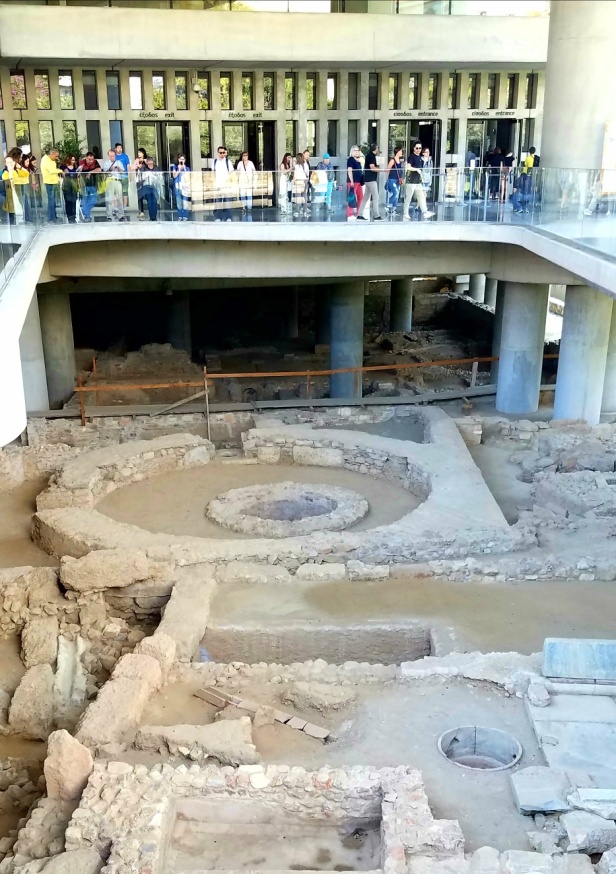
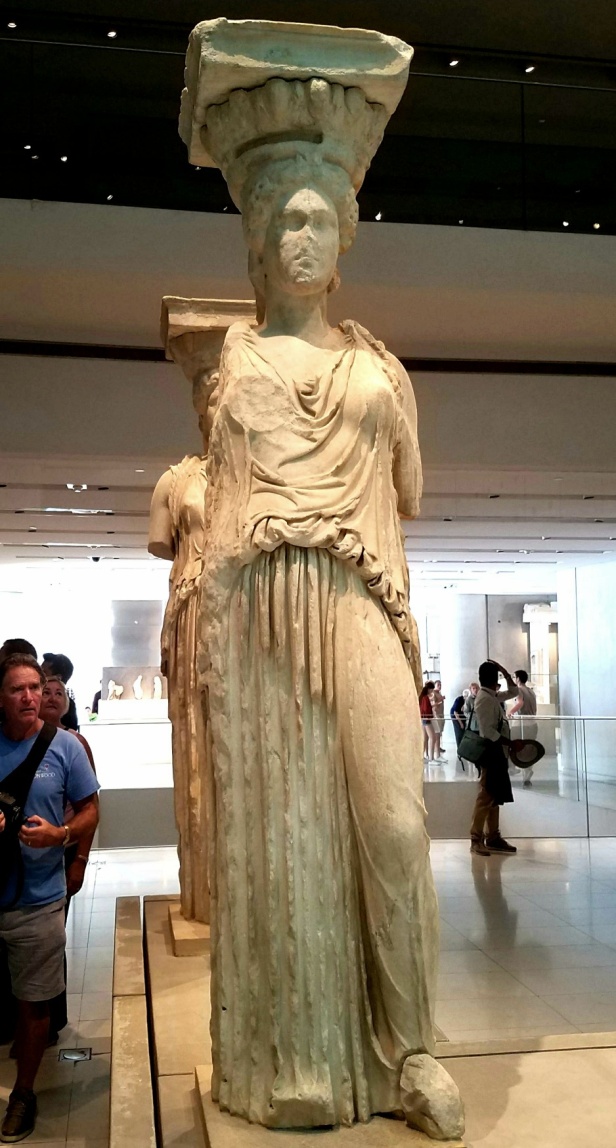

The guide described many of the important artifacts in the museum. He had a post-graduate depth of knowledge of Greek history, architecture, and all of the places we visited.

The tour ended at the museum. To get back to the hotel, the guide provided directions for the short walk to the metro station.
Overall Impression
This was a fantastic tour, and it cost less than $50! In my experience, walking tours are the best. The guides usually have a keen interest in the sights visited and are extremely knowledgeable. To get a feel for a place, walking is much better than riding. Plus walking tours almost always skip the shopping stops that are mandatory on most coach tours.
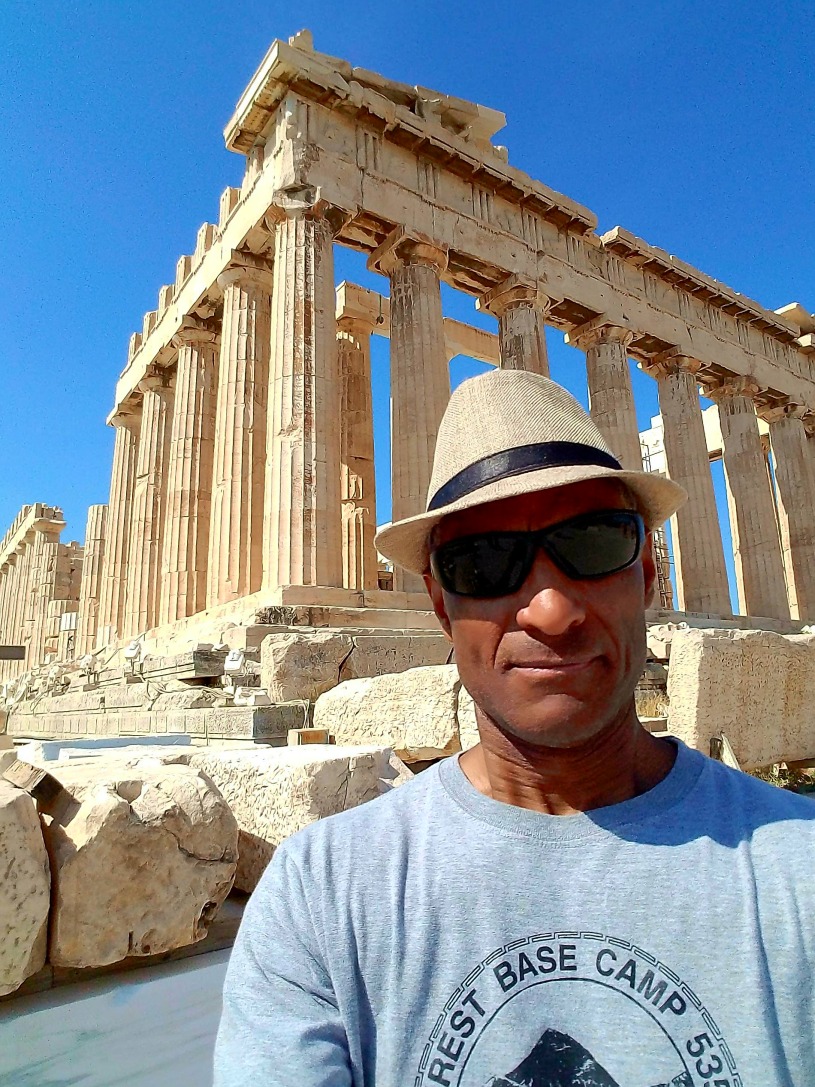
beautiful pics, my friend! so looking forward to visiting athens myself.
LikeLiked by 1 person
Hey thanks much! You will love Athens.
LikeLiked by 1 person
Great post! ❤
LikeLiked by 1 person
I’m glad you enjoyed the post. This tour was one of the my all-time favorites.
LikeLike
🌸❤🌸❤🌸
LikeLiked by 1 person
very nice article, very nice pictures…
LikeLiked by 1 person
Thanks much.
LikeLiked by 1 person